LAST December Guy Gaeta received a letter. “When I glanced at it, I thought this is too good to be true,” he remembers.
The federal and NSW governments were offering $12 million in water infrastructure rebates with drought-hit farmers able to claim up to 25% on new farm water infrastructure such as tanks, pipes, bores and de-silting dams.
It turns out it was too good to be true for Guy and farmers like him. The cash was only available to livestock farmers.
“How unfair is that? I’m sick of being treated as a second-class farmer,” says the Central Tablelands apple and cherry grower.
Guy, who chairs NSW Farmers’ Horticulture Committee, has been lobbying government ever since, reminding politicians: “If our trees die it’s a seven-year turnaround.”
RELATED ARTICLES:
-
"Fruit growers should focus on quality"
-
Cutting red tape around rural labour
To add insult to injury, horticulturists also need a water access licence to sink bores for commercial purposes. Guy says his orchards in Orange are surrounded by lifestyle blocks.
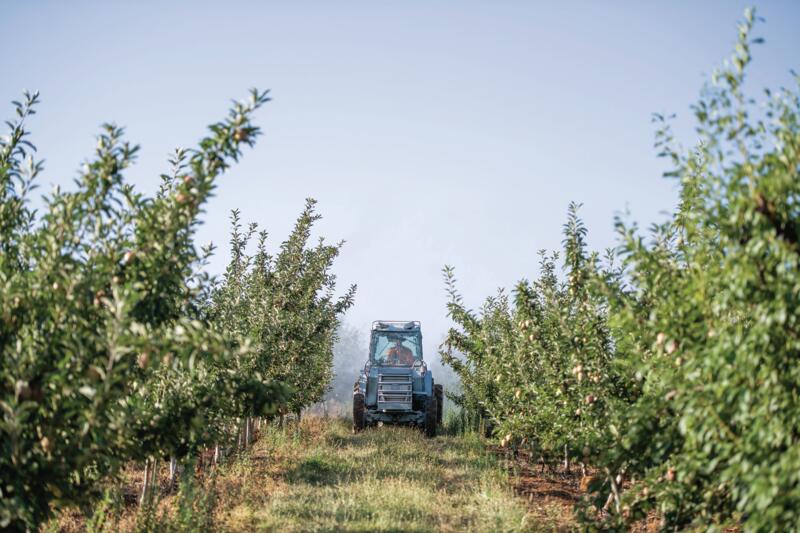 Growers living in semi-rural areas are often surrounded by lifestyle blocks who are able to sink bores for domestic use, while the growers cannot do so without a water access licence for their trees. Photo by: Pip Farquharson.
Growers living in semi-rural areas are often surrounded by lifestyle blocks who are able to sink bores for domestic use, while the growers cannot do so without a water access licence for their trees. Photo by: Pip Farquharson.
“We have one guy with about five acres and his lawn is always green, no matter how dry it is. He has a bore and waters it just about every day,” he says.
“Why can you sink a bore for stock and domestic use but not to maintain your livelihood?” – Guy Gaeta
Guy’s 23-megalitre dam is currently down to three metres. The grower says his trees are dying and he’s desperate to save them. His frustration is palpable.
He’s normally expected to pay
NSW Department of Industry’s water division for the 23 megalitres of water his turkey nest dam holds, whether he gets water or not – although the department has this year agreed to provide a rebate of up to $4,000 per licence for growers like him who fall under unregulated river licences.
Guy is far from the only horticulturist suffering in the drought. NSW Farmers’ online survey in April found nearly 90% of growers think it’s unlikely they’ll have sufficient water to maintain permanent plantings through the autumn and winter, with irrigators on the Murray equally concerned.
READ MORE DROUGHT SPECIAL FEATURES:
-
Drought survey: Farmers tell us how they are faring
-
Drought-affected crop growers face tough decisions
Zero water allocations raise pressure on permanent plantings
Chris Stillard farms at Barooga in the Murray region, west of Lake Mulwala. His property sits at the lower end of the area of
Murray Irrigation, which is the largest private irrigation company in Australia.
Chris grows lucerne hay and persimmons and, for the first time, has received a zero water allocation leaving him completely reliant on carry-over water.
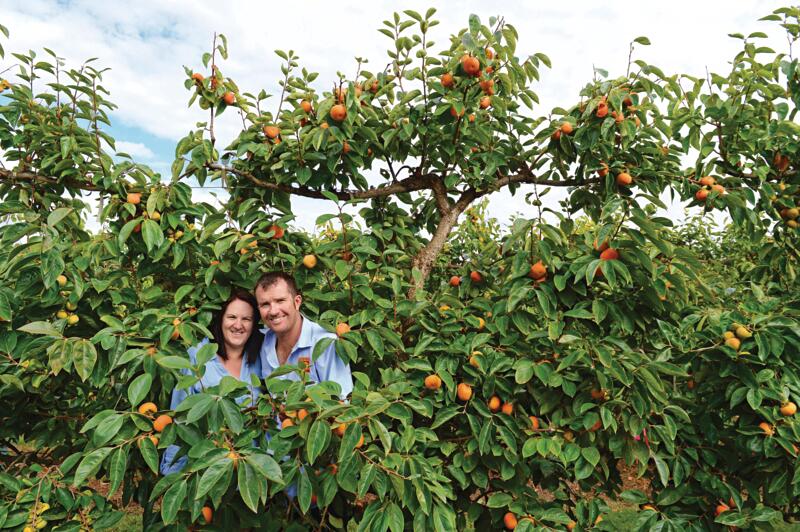 Chris Stillard and his wife Belinda amongst the persimmon trees on their Barooga farm. Source: Newspix.
Chris Stillard and his wife Belinda amongst the persimmon trees on their Barooga farm. Source: Newspix.
He has invested in a highly efficient sub-surface drip irrigation system, but even so this year managed only 400 tonnes of hay compared to his usual 1,000 tonnes. “Next year I’ll be lucky to have 80 tonnes – and that’s being positive,” he says.
“Persimmons this year will also be tough. Our flowering was excellent.”
“Everything was going fine until we had two weeks of 40°C-plus heat. I’d planted 1,500 new trees and lost 10% of them.” – Chris Stillard
“Fruit size is 25% smaller because there’s nothing like fresh rain to get good size and we’ve virtually had none. That means the prices will probably drop accordingly and I’ll get 25% less. Also with no rain, we’re under greater pressure from birds and bats, which have less food to source.
“I’ve netted half my orchard and did intend to net the whole lot, but next season, because I’ve lost more than half my income due to no water for the hay, I won’t be able to afford it.”
Chris says he’s a positive person – “You shouldn’t be in farming if you’re not” – and can even find some upsides to the current condition. Fruit fly numbers are down because of the hot dry weather and he’s needed less fungicidal sprays.
RELATED ARTICLES ON HORTICULTURE:
-
Organic broccoli farmers innovating with powders
-
Blueberry farmers targeting smoother supply chain
-
Cherry farmers see premium brand bear fruit
However, he’s not only worried about the impact on himself but also on others from his local community especially dairy farmers, now struggling to source hay. “I could buy water but at $500 a megalitre it’s not economical for the hay,” Chris says.
“However, when you have permanent plantings, you’re over a barrel. You need water every year simply to keep your trees alive.” – Chris Stillard
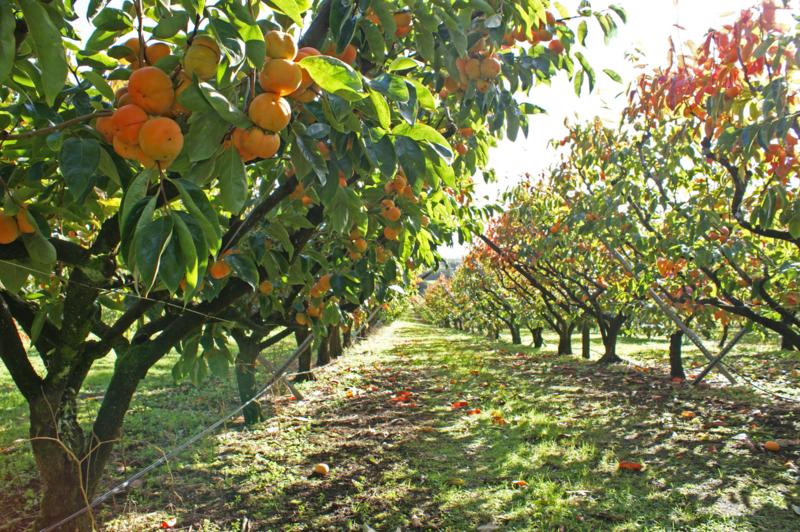 Persimmon trees don’t start bearing fruit, until they are 3-6 years old so there are huge setbacks for farmers if a tree dies due to lack of water. Source: Getty Images.
Persimmon trees don’t start bearing fruit, until they are 3-6 years old so there are huge setbacks for farmers if a tree dies due to lack of water. Source: Getty Images.
Opening up water rights to investors has been a disaster, he says. “There are huge water holdings owned by wealthy individuals and basically they hoard water when it’s cheap and maximise the return on their investment when it’s dry.”
Another issue causing anxiety is the recent increase in nut plantations. More than 40,000ha along the Murray Valley in NSW, Victoria and South Australia is now covered with more than 10 million irrigated almond trees, 25% planted in the past few years. Owners include global giants Olam and ASX-listed Select Harvests and high returns are attracting investment, especially from North America and China.
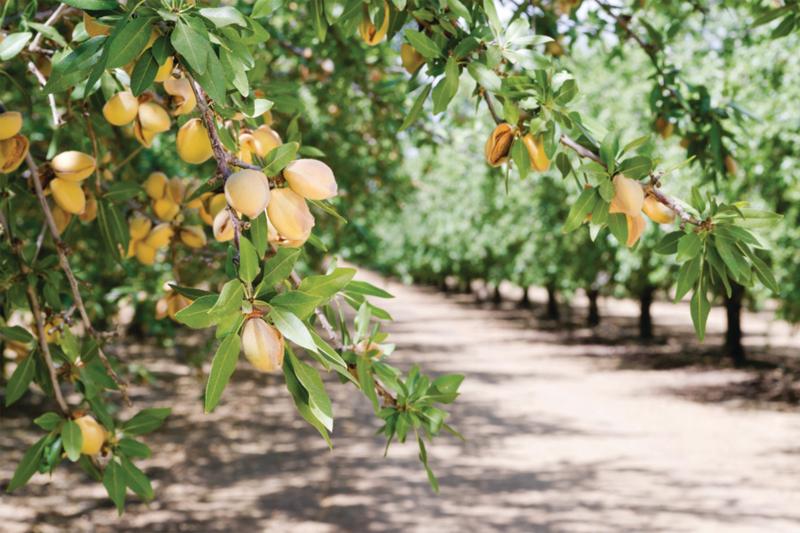 Over 40,000ha along the Murray Valley in NSW, Victoria and South Australia is now covered with more than 10 million irrigated almond trees. Source: Getty Images.
Over 40,000ha along the Murray Valley in NSW, Victoria and South Australia is now covered with more than 10 million irrigated almond trees. Source: Getty Images.
The corporate growers are mainly on cheaper dryland cropping properties on general security water within pumping distance of the southern Murray-Darling Basin’s major rivers.
The consequences of not planting crops
The orchardists look with envy at vegetable growers who can choose not to plant if there’s not enough water. But it’s not that simple, says NSW Farmers’ policy director – cropping and horticulture, Robert Hardie. “If they don’t put a crop in the ground they don’t create an income, which has flow-on consequences,” he says.
“In a place like Griffith, if you just turned off all the crops it would have a significant effect on people coming into town, availability of work, retailers servicing the agricultural sector.” – Robert Hardie.
“The impacts spread far beyond the farms,” says Robert.
Potato grower Geoff Moar agrees. He plants about 300ha of potatoes a year at Oaklands in the southern Riverina. This year, he has zero water allocation so is buying in water, mainly from South Australia.
“Luckily we have a property with underground water but we’ll cut back what we do and grow what we can handle with that,” he says. “I think we’ll have to cut by about 50%. It’ll be the first year we’ve had to do that.”
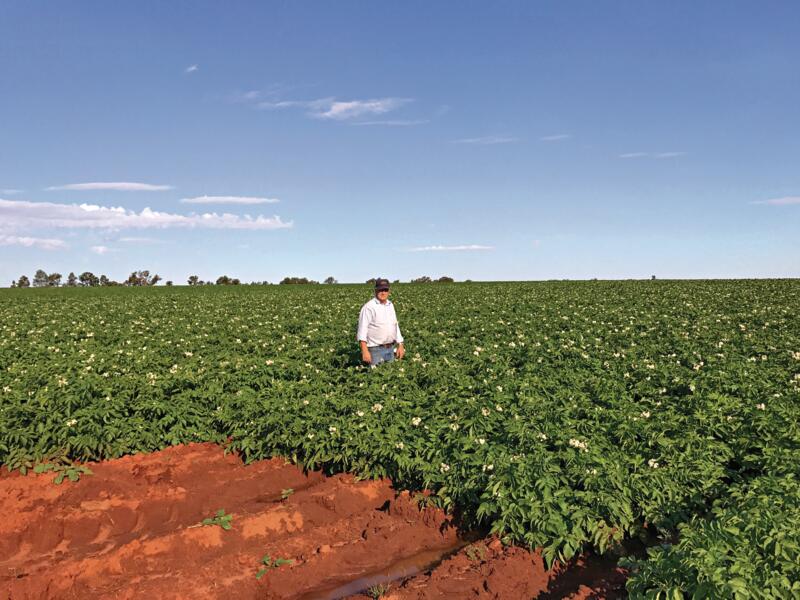 Potato farmer Geoff Moar plants about 300ha of potatoes a year. Source: supplied.
Potato farmer Geoff Moar plants about 300ha of potatoes a year. Source: supplied.
Geoff’s potatoes go to processing and he’s intent on being a reliable supplier. “We’ve taken a long time to build relationships with our supply companies and if you want an ongoing relationship, you have to be reliable. You can’t catch them off guard and not deliver.
“We have to commit to our contractor at a set price and it comes off our bottom line when we have to buy water. You don’t get compensated.”
Farmers call for review of Murray-Darling Basin Plan
Geoff would like the Murray-Darling Basin Plan paused and reviewed. It frustrates him that South Australian irrigators get their 100% allocation and feels environmental flows are often wasteful. “The last time we had a dry we were better off than we are now with this plan,” he says.
RELATED: The truth about the Murray-Darling
NSW Farmers doesn’t support a pause, says Robert Hardie. “However, we support a review to ensure the capacity issues are looked at and the further water-saving projects that have been identified are achieving their stated outcomes.”
A recent Executive Council meeting passed a motion calling for no further developments downstream of the Barmah Choke until issues associated with the physical capacity of the river to carry water are dealt with.
“You can carry water, but it’s the cost-effectiveness and physical ability of the systems that’s the challenge,” says Robert. “The irrigated community in southern NSW is saying there should be recognition of that scenario to ensure their water can be provided. They’ve struggled with reduced rainfall, now they’re at crunch time.”